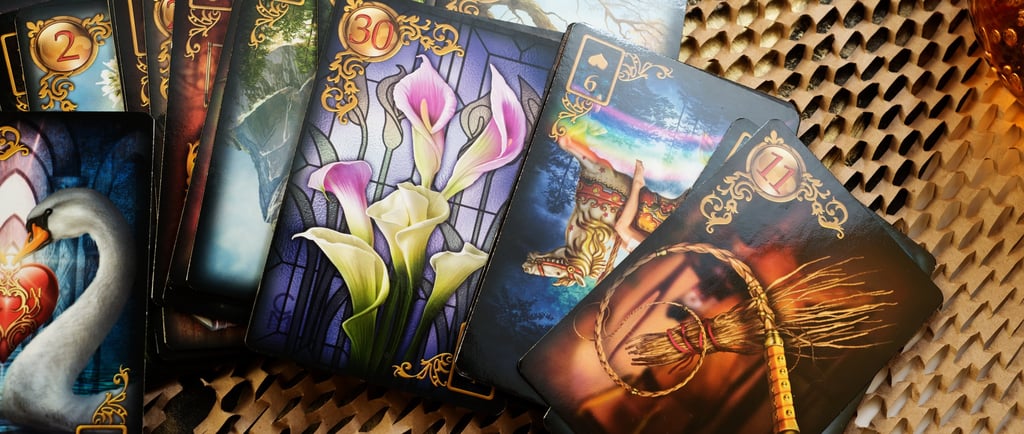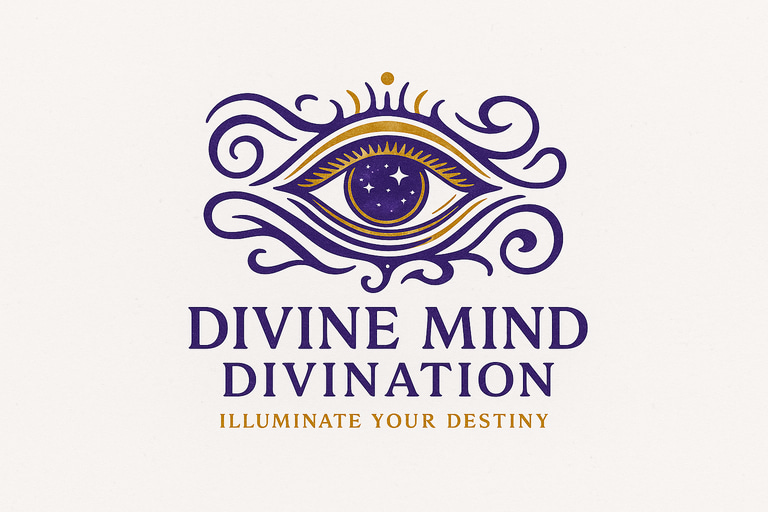Diving Deep into Lenormand: An Oracle for Today, Rooted in History!
Unlock the mystery of the Lenormand oracle! This blog post unravels centuries of ancient wisdom, revealing how timeless symbols and divination practices can transform your modern journey. Are you curious about how historical insights can light up your path today? Click to dive in and be inspired!
GNLM & Hyrschall
4/8/20254 min read


Diving Deep into Lenormand: An Oracle for Today, Rooted in History!
Hey there, fellow seekers and curious minds! Have you ever felt drawn to the mysterious world of divination, beyond the well-trodden paths of Tarot? Well, buckle up, because I'm about to take you on an exciting journey into the captivating realm of Lenormand cards! Trust me, this isn't just another deck of pretty pictures; it's a powerful oracle steeped in history, offering surprisingly direct and insightful messages about our everyday lives.
What's the Buzz About Lenormand?
Maybe you've stumbled upon Lenormand spreads online or heard whispers of its straightforward approach. Unlike Tarot, which often delves into the depths of our subconscious and explores the 'why' behind situations, Lenormand tends to focus on the 'how' and 'what' of our practical world. Think of it as a map of your current circumstances and potential future events, laid out in clear, concise symbols.
What first grabbed me about Lenormand was its simplicity. Each of the 36 cards features a single, recognizable image – a house, a tree, a key, a rider. It felt less intimidating than the intricate imagery of some Tarot decks. But don't let that simplicity fool you! The true magic of Lenormand lies in how these seemingly basic symbols combine to create complex and nuanced narratives. It's like learning the alphabet – each letter is simple on its own, but together they can form endless stories!
Peeling Back the Layers of History
Now, let's journey back in time to uncover the fascinating roots of this oracle. The name "Lenormand" itself is tied to a rather intriguing figure: Marie Anne Adelaide Le Normand. Born in France in 1772, she rose to fame as a renowned French fortune-teller. Can you imagine advising some of the most influential figures of her time, including Napoleon Bonaparte and his wife, Empress Joséphine, on their destinies? Legend has it she even predicted Napoleon's loss in the war!
However, here's a little historical twist: the specific 36-card deck we now know as the Petit Lenormand wasn't actually created by her. It seems the name "Lenormand" was adopted after her death, likely for marketing purposes, to capitalize on her widespread fame as a cartomancer.
So, where did this deck truly originate? It's believed to have been partially inspired by a German card game called "The Game of Hope" ( das Spiel der Hoffnung ), which emerged around 1799. This game, initially designed for parlor entertainment, even contained simple suggestions for divination. It didn't take long for people to elaborate on these basic instructions, leading to the development of various Lenormand traditions across Europe.
Interestingly, while the Petit Lenormand gained traction, there's also the Grand Lenormand, a more complex 54-card deck filled with arcane symbols from mythology, alchemy, and astrology. However, the 36-card Petit Lenormand is the version most popular today, especially here in the U.S..
It's also worth noting that even in Marie Anne Lenormand's time, she apparently used different types of cards for her readings, including the Etteilla deck, a Tarot-based system developed by another French occultist. This just adds another layer to the fascinating and somewhat mysterious history of the Lenormand tradition.
Lenormand vs. Tarot: What's the Difference?
Having a background in Tarot myself, I was immediately struck by the distinct feel of Lenormand. Here are some key differences I've observed:
No Reversals: Unlike Tarot, where reversed cards can alter or add nuance to meanings, Lenormand cards do not have reversals. The positive, negative, and neutral associations are inherent in the card's primary meaning. For example, the Sun card in Lenormand will always represent a positive outcome.
Literal Interpretations: Lenormand meanings tend to be more direct and literal. While Tarot can be highly symbolic and open to intuitive interpretation, Lenormand often provides more straightforward answers. Think of it as reading a sentence where each card contributes a specific element. For instance, drawing the Sun and the Ship together clearly suggests a successful trip.
Focus on Everyday Matters: While Tarot can explore profound psychological and spiritual themes, Lenormand often focuses on practical, everyday events. It's excellent for getting insights into relationships, work, finances, and other tangible aspects of life.
Emphasis on Combinations: As I mentioned earlier, Lenormand truly shines in its card combinations. The meaning of a reading emerges from how the cards interact with each other in pairs, triplets, or larger spreads. It's about weaving together the individual meanings to tell a story.
Tableau-Style Layouts: Lenormand often utilizes grid-like or linear layouts where cards are read in "sentences". The renowned Grand Tableau, using all 36 cards, exemplifies this, allowing for a holistic and interconnected reading. This tableau approach allows for reading across rows, columns, and even diagonals, creating a rich tapestry of information.
Diving into a Reading: It's All About Connection
When I approach a Lenormand reading, I often start with a clear question in mind. Even a simple three-card spread can offer profound insights. The position of each card in the spread contributes to the overall message, but the real magic happens when you read the cards in combination. For example, "Man," "Deception," and "Gift" together might warn you to be wary of accepting gifts from someone who might be lying.
For more in-depth readings, spreads like the 9-card spread or the expansive Grand Tableau allow for a more detailed exploration of a situation. In these larger spreads, techniques like mirroring (looking at cards that reflect each other across a central point) and knighting (identifying cards that are a "knight's move" away, like in chess) can reveal hidden influences and connections.
It’s fascinating to see how different Lenormand decks, while maintaining the core 36 symbols, can offer unique artistic interpretations. Some decks even include extra cards to personalize the readings further. However, the fundamental meanings remain consistent across most decks, which is a real advantage when you're first starting out.
The Enduring Appeal of Lenormand
Despite its historical complexities, Lenormand has experienced a significant resurgence in popularity in recent times. I believe this is due to its directness, practicality, and the way it helps us navigate the tangible aspects of our lives. In a world often focused on inner reflection, Lenormand offers a refreshing perspective on external events and their interconnectedness.
Whether you're a seasoned divination enthusiast or just beginning your exploration, Lenormand offers a unique and rewarding path to gaining insight and understanding. Its rich history, combined with its accessible yet sophisticated nature, makes it a truly special oracle. So, are you ready to pick up a Lenormand deck and start weaving your own stories? I know I am constantly amazed by the clarity and wisdom this unassuming deck holds!
